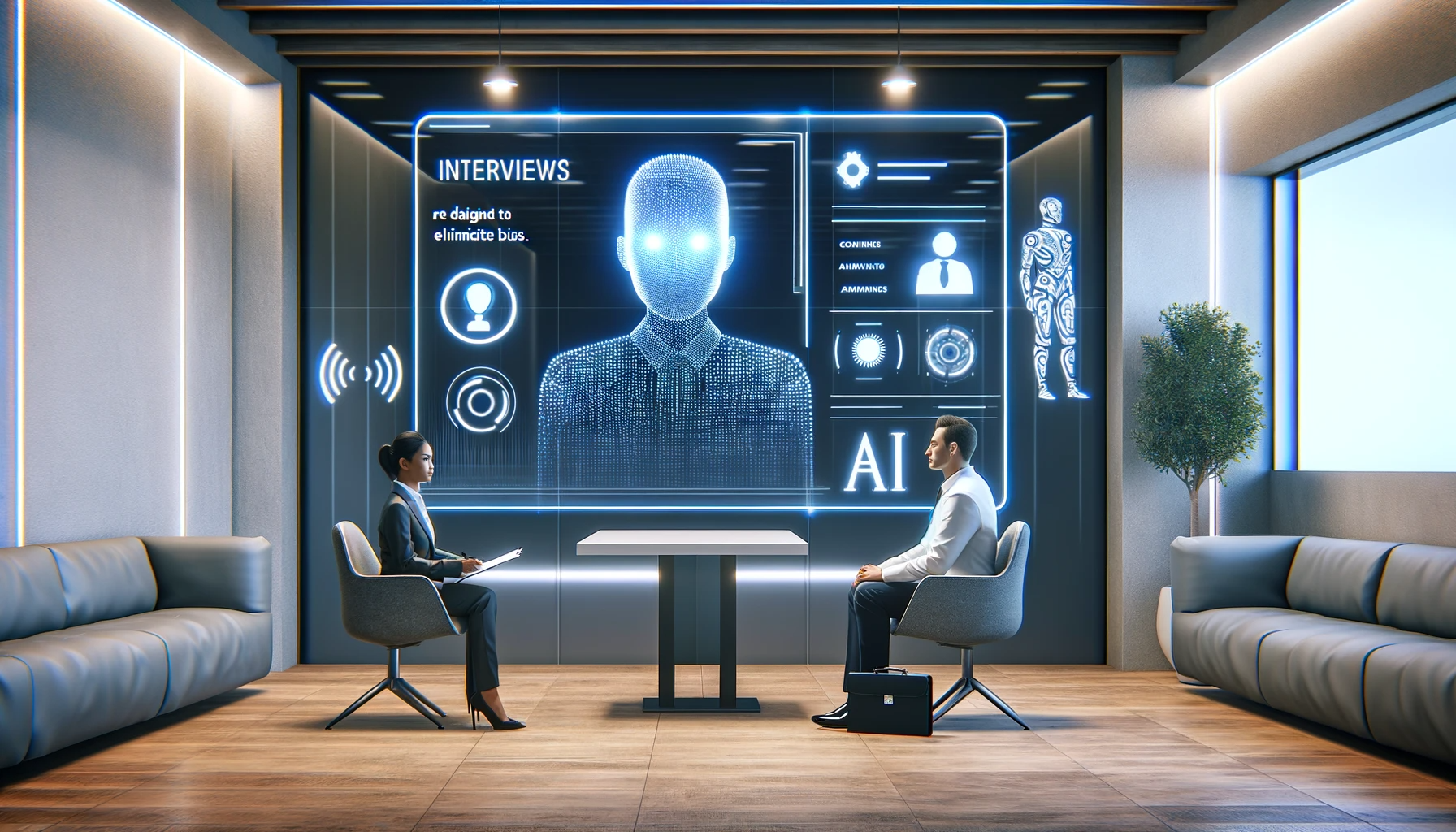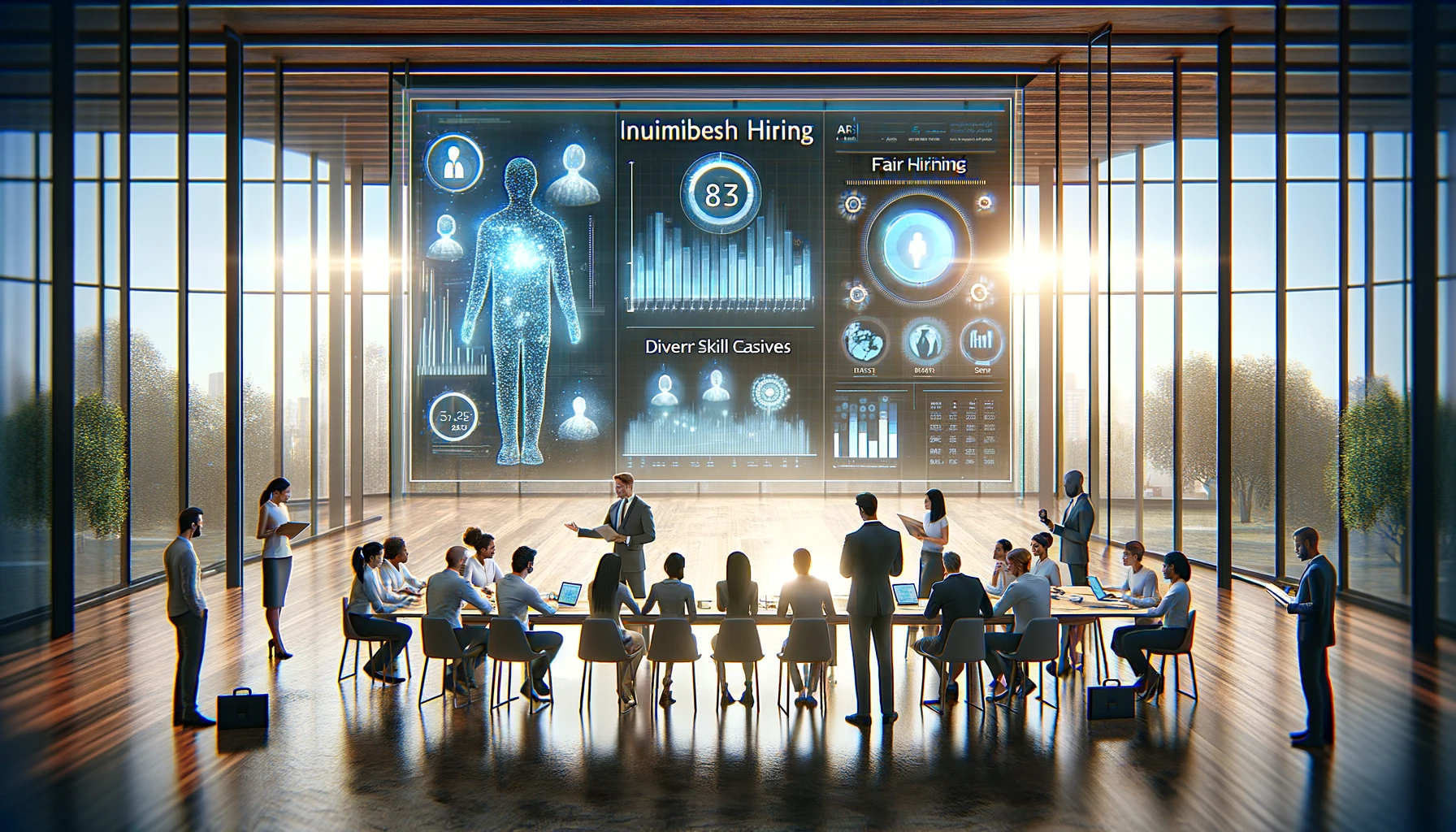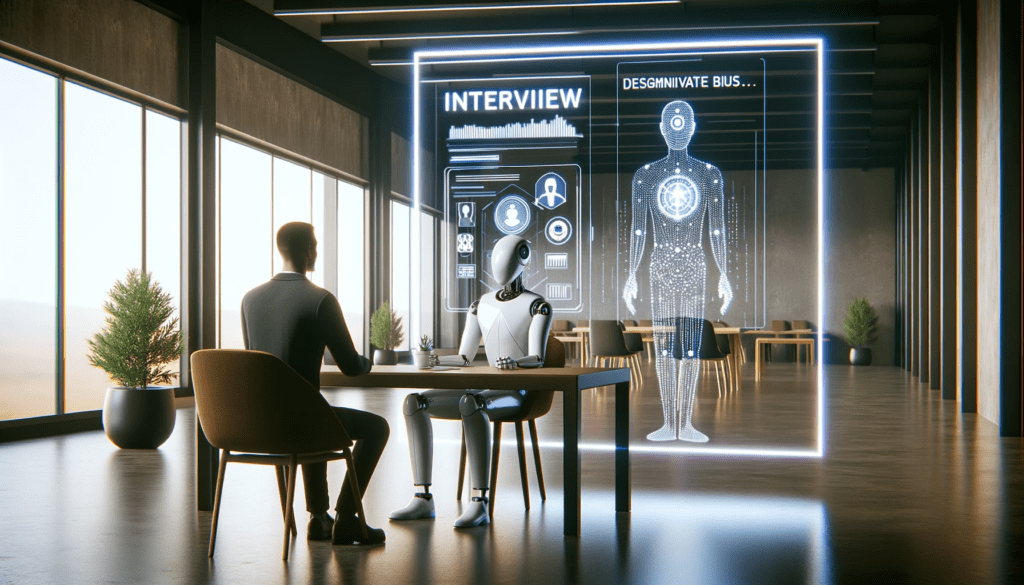Exploring the potential of AI to transform recruitment into a fairer process
In the realm of recruitment and hiring, bias has long been an insidious challenge, often subtly influencing decisions and outcomes. Traditional hiring practices, despite efforts to be impartial, are susceptible to a range of biases – conscious or unconscious – based on gender, race, age, and other factors. These biases not only undermine the fairness of the hiring process but also hinder the creation of diverse and dynamic workplaces. Enter Artificial Intelligence (AI), hailed as a groundbreaking tool with the potential to revolutionize recruitment by mitigating human biases. AI, with its data-driven algorithms and predictive analytics, promises a more objective and equitable approach to talent acquisition. However, the integration of AI in hiring is not a straightforward solution; it comes with its own set of complexities and challenges. This article aims to delve deep into the capabilities and limitations of AI in eradicating bias from hiring processes. We will explore how AI is currently being applied in recruitment, assess its potential in reducing biases, and examine the hurdles it faces in truly neutralizing the subjective elements of human judgment. The goal is to offer a comprehensive understanding of AI’s role in shaping fairer and more inclusive hiring practices.

The Reality of Bias in Hiring
Bias in hiring and recruitment refers to the predisposition or prejudice towards certain candidates over others, often based on non-job-related characteristics. Common types of biases include gender bias, where one gender is preferred over another; racial bias, which discriminates based on race or ethnicity; and ageism, where candidates are judged based on their age. These biases can manifest subtly through unconscious preferences or overtly through discriminatory practices.
Statistical data and studies have repeatedly highlighted the significant impact of these biases on employment opportunities. For example, numerous studies have shown that applicants with names that sound African-American or Latino are less likely to get callbacks compared to those with more traditionally Western-sounding names, even with identical resumes. Gender bias is evident in fields traditionally dominated by one gender, where applicants of the underrepresented gender often face unfounded scrutiny. Additionally, older candidates frequently encounter ageism, struggling to secure jobs due to stereotypes about their abilities or adaptability.
These biases not only affect individual employment opportunities but also impede the diversity and overall effectiveness of the workforce, leading to homogeneous working environments that lack varied perspectives and experiences.
Understanding AI in Recruitment
Artificial Intelligence (AI) is increasingly being utilized in the hiring process to streamline recruitment and potentially reduce human bias. Key applications include resume screening, where AI algorithms scan and evaluate resumes to shortlist candidates, and predictive analytics, which analyze data to predict a candidate’s job performance and fit.
AI offers several advantages in recruitment. It can process vast amounts of data more efficiently than human recruiters, significantly speeding up the hiring process. More importantly, AI has the potential for unbiased decision-making, as algorithms can be designed to focus solely on job-relevant criteria, disregarding factors like gender, race, or age.
Technologies such as machine learning and natural language processing are particularly relevant in hiring. Machine learning algorithms can learn from recruitment data and improve over time, while natural language processing allows AI systems to understand and process human language, facilitating the evaluation of resumes and cover letters more effectively.
AI’s Potential in Reducing Bias
AI has significant potential in reducing human biases in resume screening and candidate evaluation. By being programmed to ignore demographic information such as names, gender indicators, and age, AI systems can focus on qualifications, skills, and experiences that are pertinent to the job. This objective analysis can level the playing field for all candidates, ensuring a fairer selection process.
There are several case studies where AI has been instrumental in promoting fairer hiring. For instance, some companies have successfully used AI-driven tools to identify and correct gender bias in job descriptions, making them more appealing to a diverse applicant pool. Other AI systems have been employed to analyze speech and body language in video interviews, focusing on content over subjective elements.
Furthermore, AI can actively contribute to workplace diversity and inclusivity. It can identify gaps in workforce diversity and suggest recruitment strategies to address these imbalances. AI-driven analysis of hiring patterns over time can also provide insights into potential unconscious biases in a company’s recruitment process, allowing for corrective measures.
However, the effectiveness of AI in reducing bias hinges on the quality of the data it is trained on and the design of the algorithms. Biased input data can lead to biased AI outputs, a phenomenon known as automation bias. Thus, careful and ethical programming of AI systems, along with continuous monitoring and adjustment, is crucial in harnessing AI’s potential for fairer hiring practices.

Challenges and Limitations of AI in Hiring
While AI holds promise for enhancing fairness in hiring, it is not without its challenges and limitations. A significant concern is the potential for AI to perpetuate existing biases. This often stems from biased training data; if an AI system is trained on historical hiring data that contains biases, it may learn and replicate these biases. For example, if past hiring practices were skewed towards a particular demographic, the AI might erroneously conclude that candidates from this group are preferable. Algorithmic transparency is another challenge. Many AI algorithms used in hiring are complex and not easily understandable, making it difficult to assess how decisions are made and whether they are truly unbiased.
Designing unbiased AI systems for hiring is a complex task that requires careful consideration of the data and algorithms used. Ensuring that the data is representative and free of biases is crucial. Additionally, the algorithms must be designed to focus on relevant qualifications and skills while disregarding extraneous factors that could introduce bias.
The reliance on AI for recruitment decisions also raises ethical considerations. There is a risk of over-reliance on AI, potentially leading to a lack of human empathy and understanding in the hiring process. The potential unintended consequences, such as the marginalization of certain groups or the overlooking of unique candidate qualities that AI cannot assess, must also be considered.
Balancing AI and Human Judgment
A balanced approach that combines AI tools and human judgment is essential in hiring. While AI can efficiently handle large volumes of applications and identify suitable candidates based on set criteria, human oversight is necessary to provide context, empathy, and a deeper understanding of the nuances of human behavior and cultural fit.
Strategies for integrating AI into hiring processes while maintaining human oversight include using AI as a tool for initial screening but having human HR professionals make the final decisions. Regular audits of AI systems by humans can also ensure that these systems are functioning as intended without perpetuating biases.
Experts in AI and human resources emphasize the importance of this balanced approach. They advocate for a synergy where AI handles the quantitative aspects of recruitment, and humans manage the qualitative aspects, ensuring fairness, accuracy, and respect for diversity.
Conclusion
In conclusion, AI presents both potential and challenges in eradicating biases in hiring. While it offers an efficient and potentially less biased approach to candidate screening, there is a real risk of perpetuating existing biases and overlooking the human element in hiring. The key lies in finding the right balance between leveraging technological innovation and maintaining ethical considerations in recruitment.
As AI continues to evolve, its role in hiring practices will likely grow. However, it is imperative that this growth is accompanied by a conscious effort to ensure AI systems are unbiased, transparent, and subject to human oversight. The future of AI in hiring should aim not only for efficiency and objectivity but also for the creation of equitable workplaces where diversity is valued and nurtured. In achieving this balance, AI can be a powerful tool in shaping a fairer and more inclusive hiring landscape.
